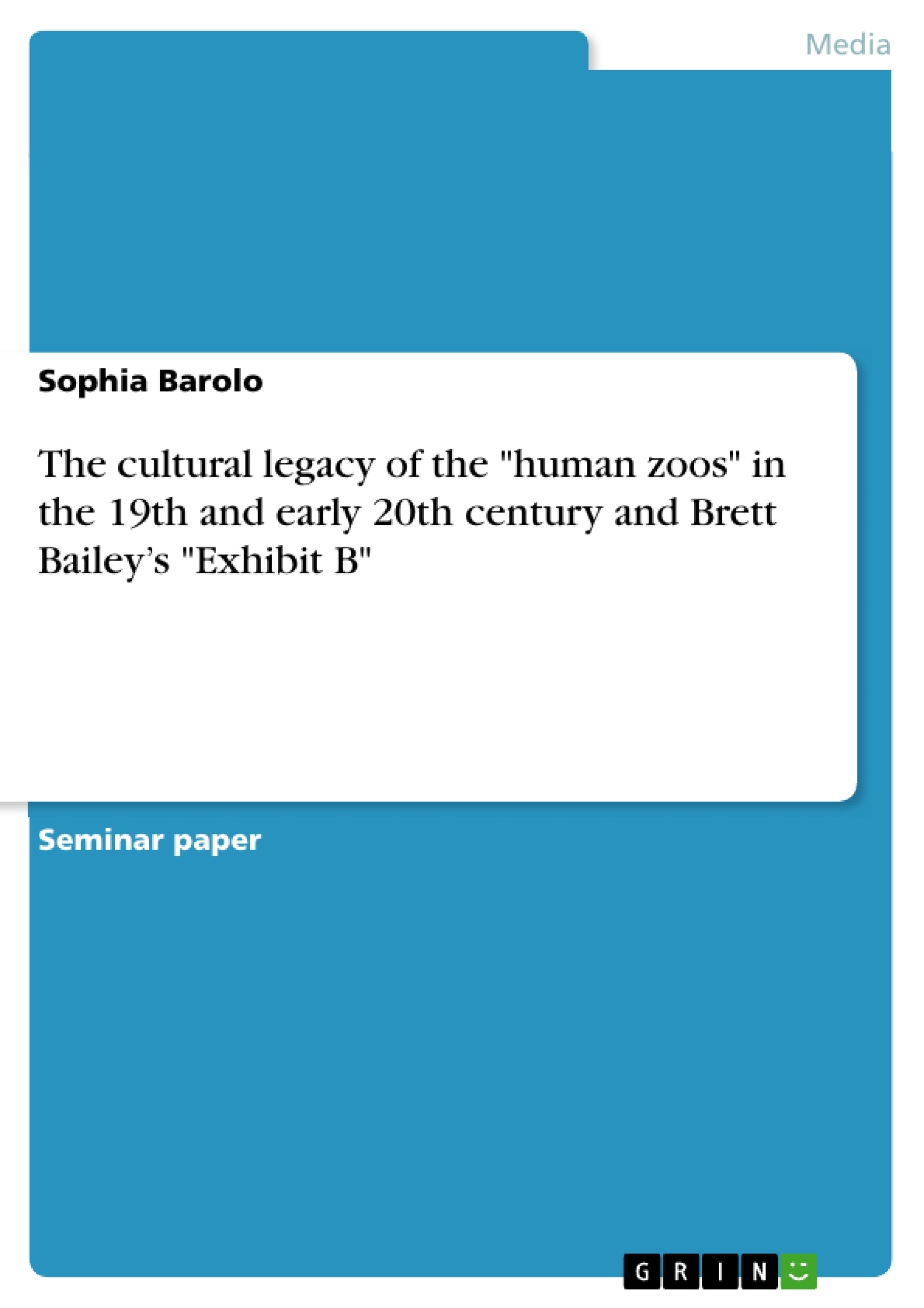This paper analyzes the beginnings of the so-called „human zoos“ in the late 19th and early 20th century and whether there are still continuities of these practices in the present world. What are the consequences, what are the impacts? It will further look into the example of Sarah Baartman, who was objectified and exhibited 1810 to 1815, in order to illustrate the horrible fates of people on display in Europe. Are human beings still exhibited and exploited in the way they used to be? The South African Artist Brett Bailey made an attempt to spread awareness of the highly popular human zoos with his show Exhibit B. The show was received very controversial by the public and in London the show even had to be cancelled due to the dimensions of the protests. The question is whether by re-creating scenes of slavery his show is able to provide a critique of racism and human-zoos or whether it is a mere reproduction of human zoos that is racist in itself.
It is in the nature of human kind to be curious and to observe things that are new to the eye. Only by observation can be recognized whether something is a danger or not. The unusual thus always exerts a strong appeal to the observer. The "exotic" has always attracted attention. This even more when an unfamiliar looking or "exotic" human being is concerned, a being that seems very familiar to the viewer and possibly even shows him similarities to himself.
This is one of the reasons why "wild people" have been displayed at fun fairs and exhibitions during centuries, and since traveling was dangerous or not possible at all and a worldwide media network did not exist, these exhibitions were often the only opportunity to see people from far away in real life. It is hardly surprising that this natural interest in the stranger has quickly been utilized by some people for their own benefit, whether to generate attention, to demonstrate power or to generate economic profits.
Inhaltsverzeichnis (Table of Contents)
- Introduction
- History of ethnological shows or “human zoos”
- Ethnological shows
- World fair
- The case of Sarah Baartman also known as the „Hottentot Venus“
- Exhibit B by Brett Bailey
- Conclusion
Zielsetzung und Themenschwerpunkte (Objectives and Key Themes)
This paper aims to analyze the origins of "human zoos" in the late 19th and early 20th centuries and explore their lingering effects on contemporary society. It investigates the consequences of objectification and exploitation of individuals for exhibition purposes, focusing on the case of Sarah Baartman as a poignant example. The paper further examines Brett Bailey's Exhibit B, a performance art piece designed to raise awareness of the historical practice of human zoos, and discusses the complexities of its reception and its potential to critique racism.
- The history and evolution of ethnological shows and "human zoos"
- The objectification and exploitation of individuals for exhibition purposes
- The legacy of "human zoos" on contemporary perspectives and societal norms
- The impact of the commercialization of "exotic" cultures
- The role of performance art in confronting historical injustices
Zusammenfassung der Kapitel (Chapter Summaries)
- Introduction: The introduction discusses the inherent human curiosity towards the unfamiliar and its exploitation for entertainment and profit. It introduces the concept of "human zoos" and their historical significance, outlining the research questions and the case study of Sarah Baartman, as well as the contemporary relevance of the topic through Brett Bailey's Exhibit B.
- History of ethnological shows or “human zoos”: This chapter provides an overview of the historical evolution of ethnological shows, tracing their origins from early modern period exhibitions of "exotic people" at royal courts and fairs to the rise of "ethnological shows" in the mid-19th century. It highlights the commercial success of these shows, focusing on Carl Hagenbeck's contribution to their development and the often stereotypical representations of "savages" they presented.
- The case of Sarah Baartman also known as the „Hottentot Venus“: This chapter delves into the specific case of Sarah Baartman, a Khoi-Khoi woman who was exhibited in Europe between 1810 and 1815. It highlights the objectification and exploitation she endured as a spectacle, showcasing the dark side of human zoos and the enduring impact of such historical practices.
Schlüsselwörter (Keywords)
The main keywords and focus topics of this text are: human zoos, ethnological shows, objectification, exploitation, Sarah Baartman, Brett Bailey, Exhibit B, performance art, racism, colonialism, cultural representation, exoticism, historical trauma.
- Quote paper
- Sophia Barolo (Author), 2017, The cultural legacy of the "human zoos" in the 19th and early 20th century and Brett Bailey’s "Exhibit B", Munich, GRIN Verlag, https://www.grin.com/document/371334



